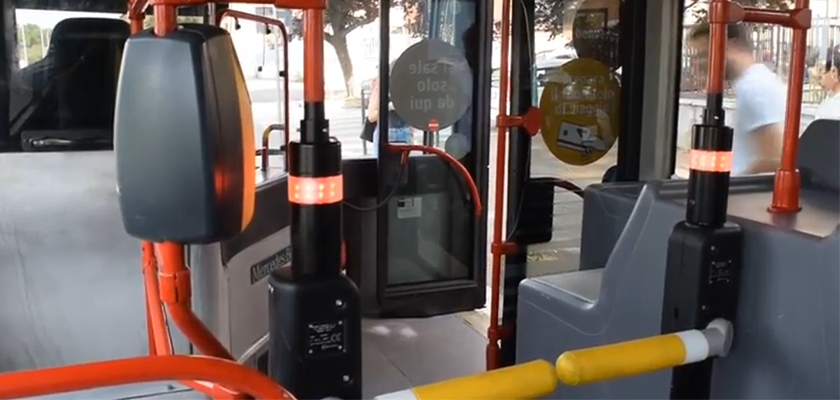Since June 11th, Rome’s bus 669 has a new look. Public transport company ATAC has introduced turnstiles in the southern suburbs shuttle service as part of an experimental system to fight widespread fare evasion. After the pilot test, the operator will extend the turnstile system to other lines that have similar routes to 669.
How does it work?
Like turnstiles on Rome’s metro network, these barriers only open once passengers scan their tickets or passes. Given this situation, bus 699 is the only one of its kind in Rome that allows people to buy tickets on board.
In case of forcing the turnstiles, an acoustic warning activates for a few seconds and the side LEDs flash. Only in exceptional cases of high overcrowding and with prior authorization from the Operations Centre will it be possible to deactivate it.
Commuters must enter through the front door. Middle or back doors are for exiting only. Consequently, passenger flow slows down. Nevertheless, commuters have shown their support to the idea, since it tackles a widespread issue in Rome.
Previous measures against fare evasion
Turnstiles are not the first measure ATAC puts into practice to reduce fare evasion. Last year, the public transport company recruited 1,400 administrative workers to act as ticket inspectors one day a week. This was equivalent to having an extra 240 ticket inspectors on duty each day.
The operator also encouraged a proper use of public transport through communication campaigns. The city released a video featuring Italian actor Francesco Pannofino highlighting the fare-dodging issue on Rome buses.
Turnstiles in buses, a thing in Italy
The introduction of turnstiles in buses is not new in Italy. Bologna deployed these barriers in three of its bus lines in 2015 and extended the scheme to another one in February last year. According to Italian operator Tper’s estimations, fare evasion in these lines fell more than half.
Ancona deployed turnstiles pilot test too in October 2017. Two moths later, the city’s bus service Conerobus activated a second phase to check the system’s performance in more crowded and longer distance routes.
Venice’s alternative use for turnstiles
Whilst many cities in Italy deploy turnstiles to fight fare evasion in public transport, Venice has found another use for them: crowd management. Due to the enormous amount of visitors the city receives, during the May 1 weekend, Venice introduced temporary gates at the ends of two major bridges. The aim was to filter people trying to enter the historic part of the city.
Police could close the gates whenever crowds were too thick. Only those who possessed a Venezia Unica pass, a card to access many city’s services, were able to cross.
Photo: Trenino Blu https://bit.ly/2ts9R7g



